Key takeaways
- Vintage looks in crafts evoke nostalgia through subtle imperfections and aged materials, capturing the essence of history.
- Mastering basic techniques in handmade paper crafting, such as understanding fiber content and utilizing effective drying methods, enhances the desired vintage vibe.
- Embracing imperfection and layering colors patiently creates authentic vintage effects, turning crafting into a storytelling process.
- Quality materials and tools are essential; they significantly impact the authenticity and timeless feel of the finished crafts.
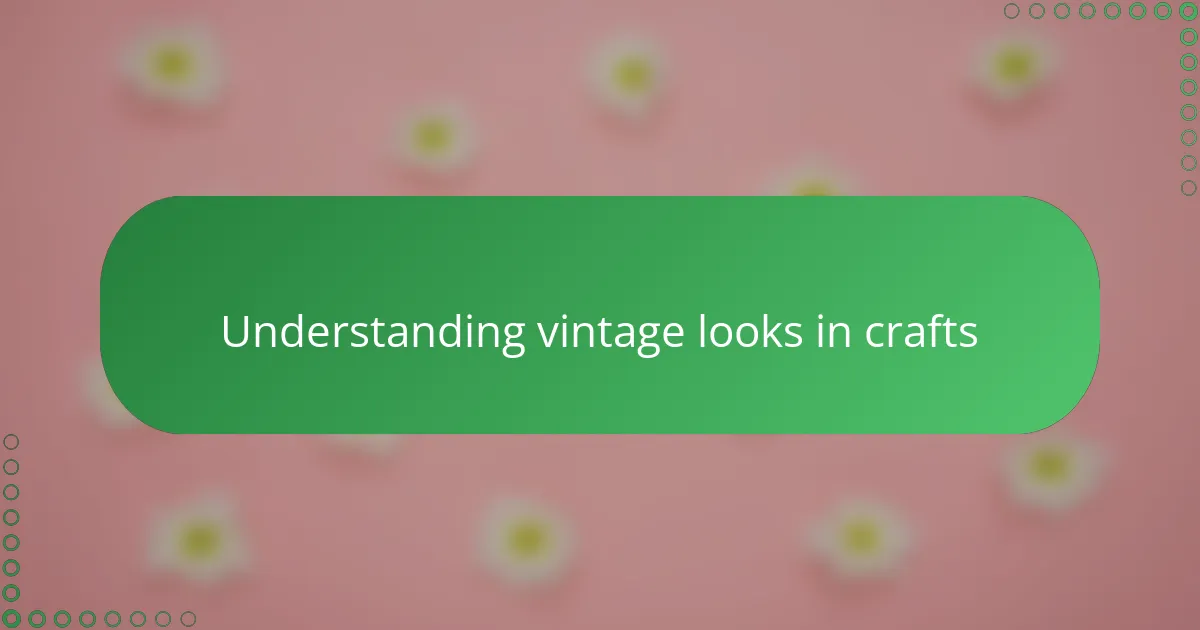
Understanding vintage looks in crafts
Vintage looks in crafts have a unique charm that feels like stepping back in time. I’ve always been drawn to how subtle imperfections and faded colors tell stories that modern designs often miss. Do you ever notice how an aged paper or a distressed edge can evoke a sense of nostalgia almost instantly?
For me, understanding vintage aesthetics is about appreciating the beauty of wear and history. It’s not just about copying old styles but capturing the essence—like the softness of sepia tones or the delicate patterns that whisper of days gone by. This emotional connection turns simple handmade paper into something truly special.
I often wonder what memories those vintage looks carry—were they joyful, quiet, or full of life? Trying to replicate that feeling in my crafts pushes me to experiment with textures, inks, and techniques that mimic aging. It’s a process that feels less like crafting and more like storytelling.
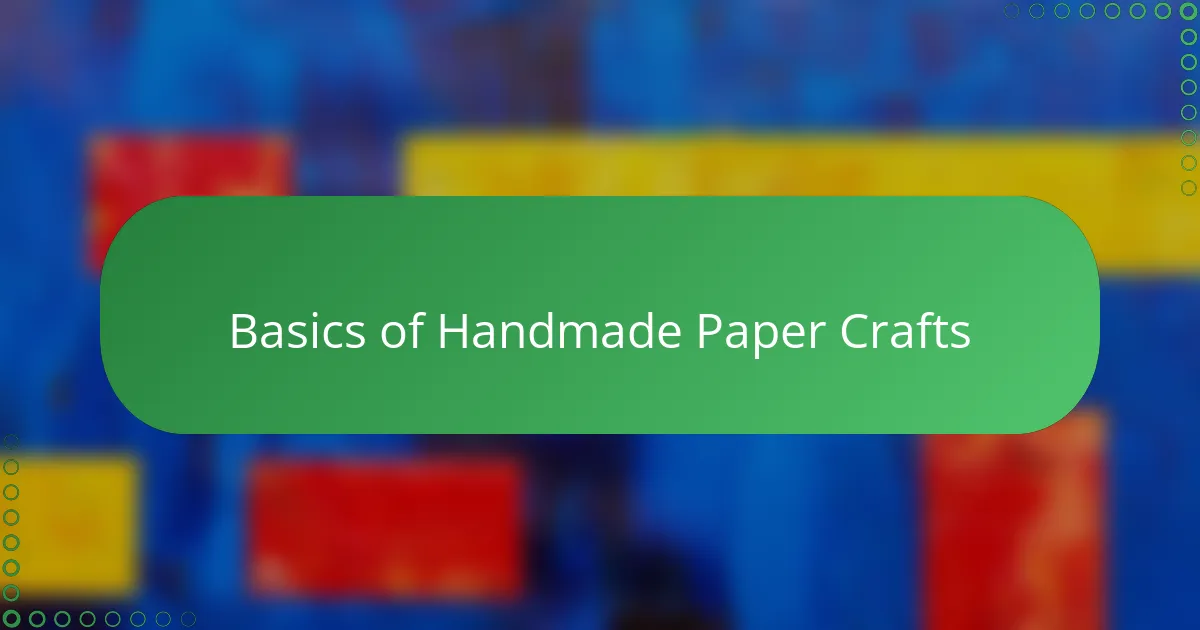
Basics of handmade paper crafts
Working with handmade paper always surprises me because every sheet tells its own story. The texture and weight differ slightly each time, making every piece unique—something machine-made paper just can’t match. Have you ever felt that satisfying roughness under your fingers when choosing paper for a project?
I’ve found that mastering the basics—like understanding fiber content, pulp types, and the drying process—makes a huge difference in achieving the look and feel I want. It’s fascinating how subtle changes in these elements can completely alter the vintage vibe I aim for. Sometimes, just slightly thicker fibers give that perfect old-world heft that brings a craft to life.
One thing I keep learning is patience. Handmade paper demands it. From soaking and pressing to drying, each step requires careful timing and attention, but the results are worth it. It’s almost meditative, and it reminds me that crafting is as much about the journey as the finished piece. Have you experienced that same calming rhythm in your work?
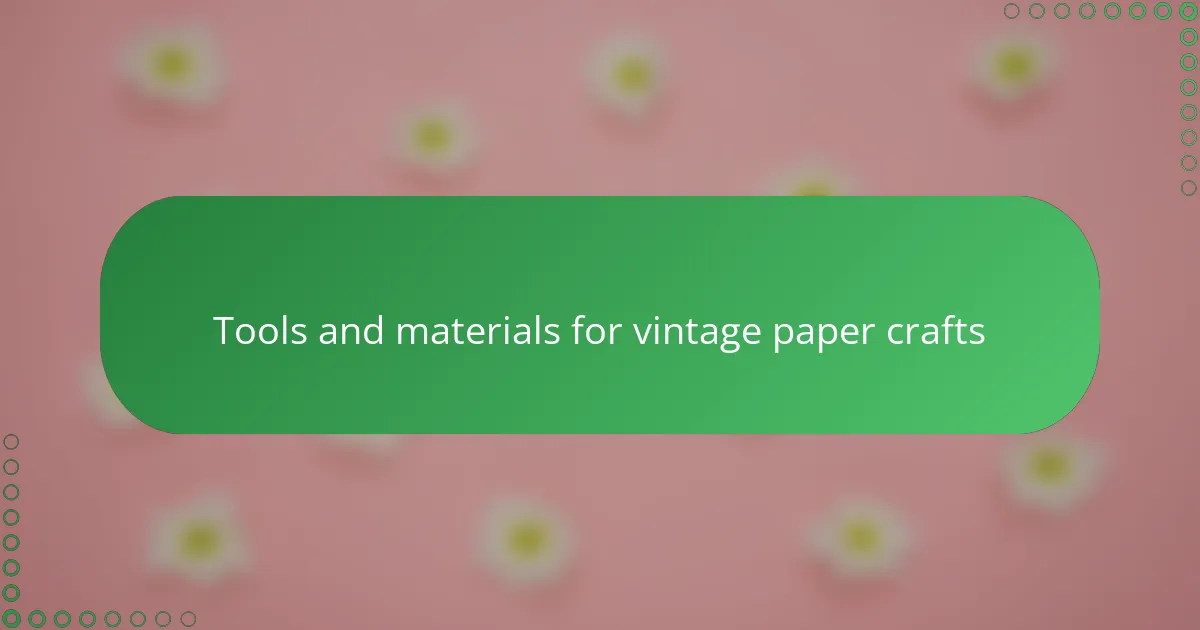
Tools and materials for vintage paper crafts
When I dive into vintage paper crafts, my go-to tools are simple yet purposeful: a good quality bone folder for crisp folds and distressing ink pads to add just the right amount of aged shading. Have you ever noticed how a smudged edge or a gently inked corner can instantly transport a piece back several decades? It’s amazing how a small tool can create such a big effect.
For materials, I always reach for papers with some texture—often deckled or rough-edged handmade sheets that feel authentic right away. Using tea stains or diluted acrylic washes has become my favorite way to give new paper that lovely, timeworn tone. There’s something deeply satisfying about watching fresh, bright paper mellow into those warm, sun-faded hues.
I also keep a stash of vintage ephemera—old book pages, postcards, and lace trims—that I incorporate to build layers of history and character. Isn’t it fascinating how adding these tiny relics can make a handmade card or journal page whisper stories from another era? For me, these materials are the heart and soul of any authentic vintage paper craft.
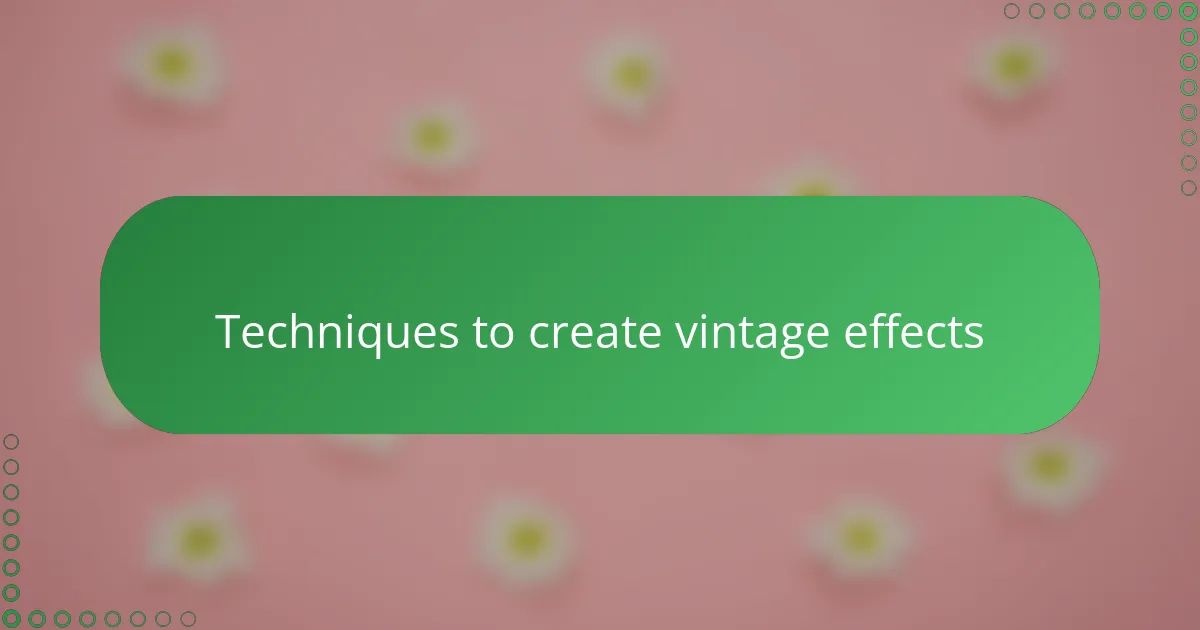
Techniques to create vintage effects
One technique I always come back to is distressing the edges of my paper. Rubbing them gently with sandpaper or scrunching them just enough creates that worn, loved look that instantly adds character. Have you ever noticed how rough edges make a piece feel like it’s traveled through time?
Tea staining is another method that never fails to deliver authentic vintage tones. I remember soaking a sheet overnight once, and the result was a warm, uneven sepia wash that felt like it had a story behind it. It’s amazing how something as simple as a natural stain can whisper history into your craft.
Layering inks and washes is where I get playful. By blending diluted inks with soft brush strokes, I build depth and softness that mimic age spots and faded patterns. Do you find it rewarding when these subtle touches transform plain paper into something that feels truly timeless? For me, that’s where the magic happens.
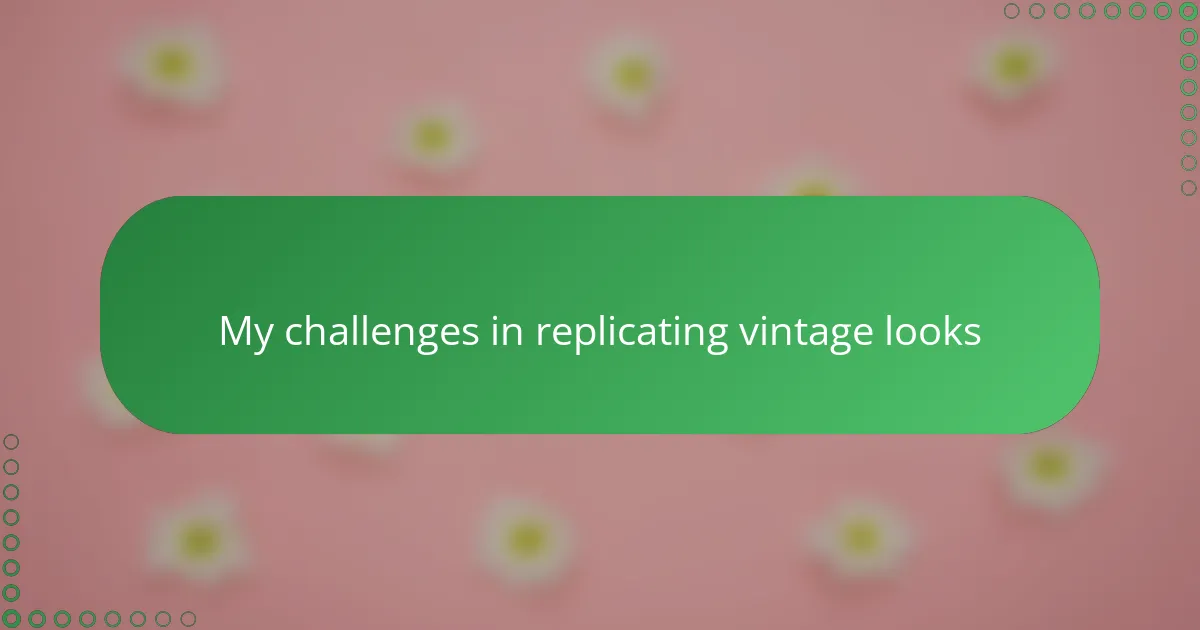
My challenges in replicating vintage looks
Replicating vintage looks hasn’t been without its hurdles. I often struggle with getting the right balance between making a piece look authentically aged and not overdoing it to the point where it feels artificial or forced. Have you ever tried to distress paper, only to end up with something that looks more “wrecked” than “worn-in”? That frustration has taught me that subtlety is key.
Another challenge is patience—or, more precisely, the lack of it. Achieving genuine vintage effects means waiting for stains to dry completely or layering inks slowly, and sometimes I’m just too eager to see the final result. It’s in those moments I realize that rushing takes away from the delicate nature of vintage aesthetics. Do you ever fight the urge to hurry through your projects, only to regret it later?
Sometimes the unpredictability of materials throws me off, too. Handmade paper can react differently each time I try tea staining or ink washes, making it hard to recreate the exact look I want. I’ve learned that embracing those happy accidents is part of the vintage charm, but it still keeps me on my toes each time I start a new piece. Have you found that working with natural textures means controlling less and creating more?
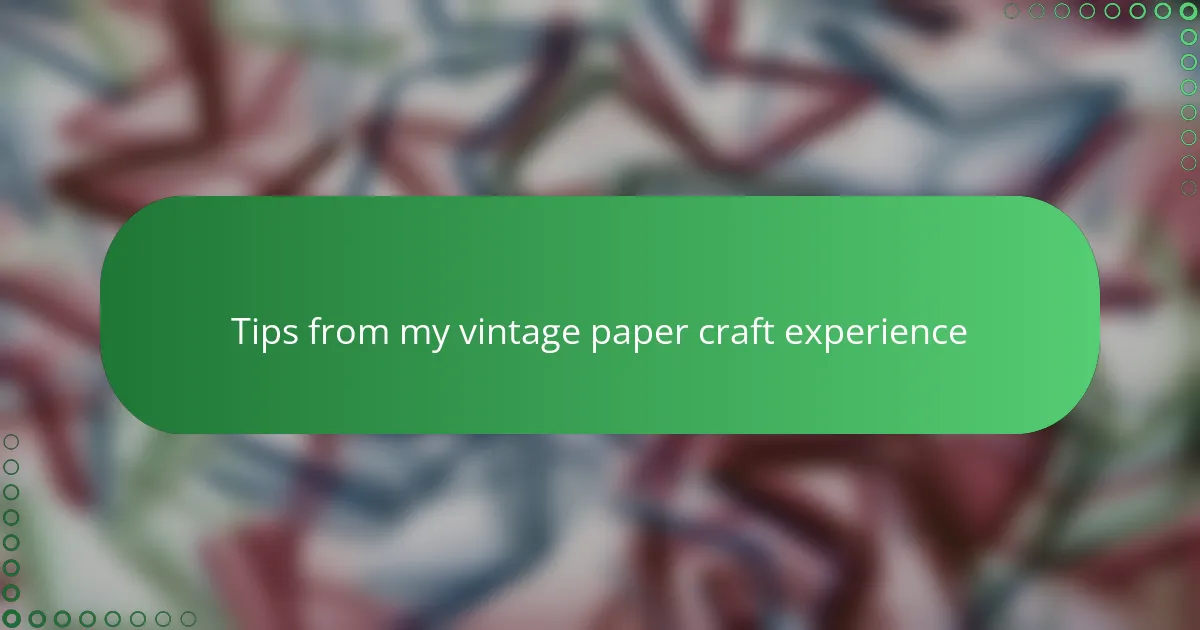
Tips from my vintage paper craft experience
One tip I’ve come to rely on is embracing imperfection. When I first tried replicating vintage looks, I fought the urge to make everything too neat. But allowing scrapes, uneven stains, and subtle discolorations actually made my crafts feel more authentic. Have you noticed how these “flaws” tell a story of time passing? That’s the secret to vintage charm.
Another lesson from my experience is to experiment patiently with layering. I used to apply inks and washes too boldly, only to clear away that harshness later. Now, I build up colors gently in several thin layers, watching how they blend and age the paper naturally. It’s a slow process, but I’ve found it’s where the true depth and softness come alive—like painting the past one brushstroke at a time.
Lastly, I can’t stress enough the importance of quality materials. Early on, I grabbed whatever paper was handy and regretted it when my aging techniques didn’t hold well. Sourcing textured handmade sheets and vintage-inspired embellishments transformed my work overnight. Do you find that good materials inspire you differently? For me, they’re the foundation that makes every detail feel timeless and real.
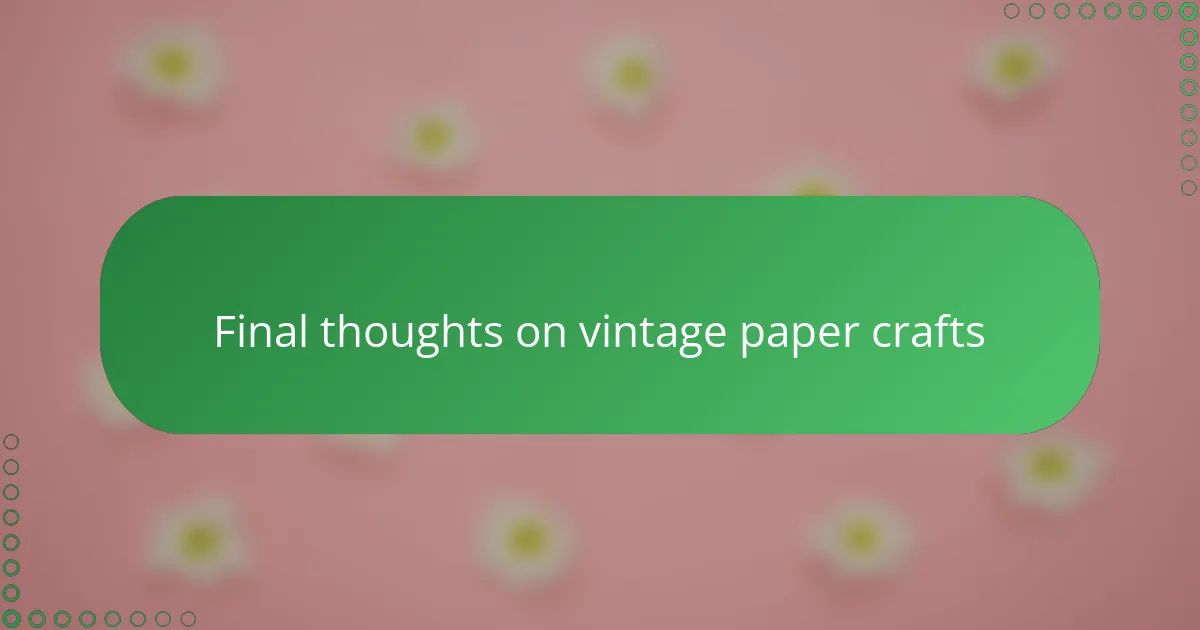
Final thoughts on vintage paper crafts
Looking back on my journey with vintage paper crafts, I realize it’s less about perfectly mimicking the past and more about capturing its spirit. Have you ever felt that quiet satisfaction when a piece just “speaks” history without trying too hard? For me, that moment is pure magic.
Sometimes I catch myself holding a finished craft a little longer, tracing the worn edges and faded hues, as if connecting with the hands that might have once touched something similar. It’s strange how paper, something so fragile, can carry such a weight of feeling. Doesn’t that make all the trial and error, the waiting and layering, completely worthwhile?
If there’s one final thought I can share, it’s this: vintage paper crafts invite patience, playfulness, and a deep respect for imperfection. When you embrace those elements, your handmade creations don’t just look old—they feel timeless. Have you experienced that transformation in your own work? It’s genuinely rewarding.
